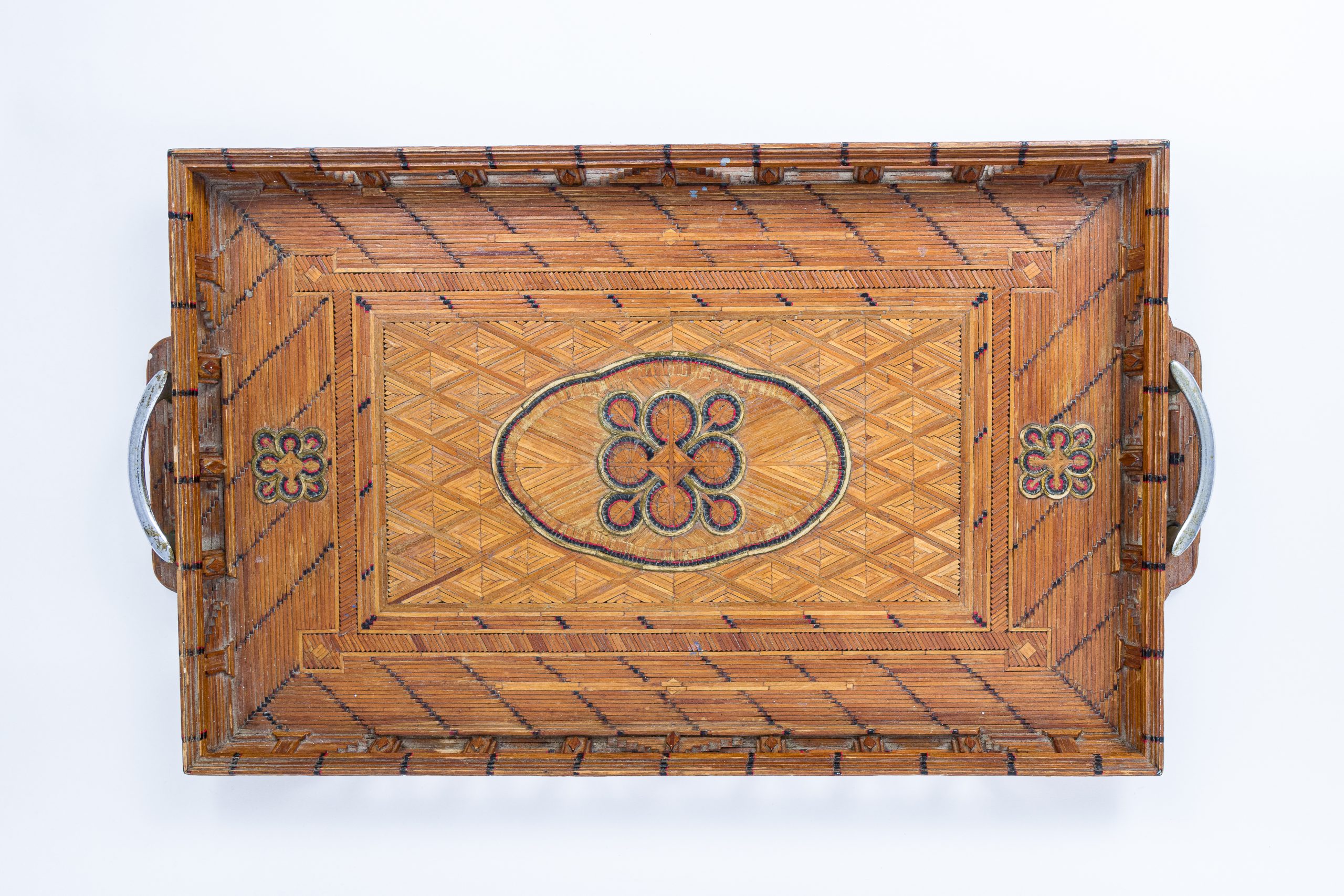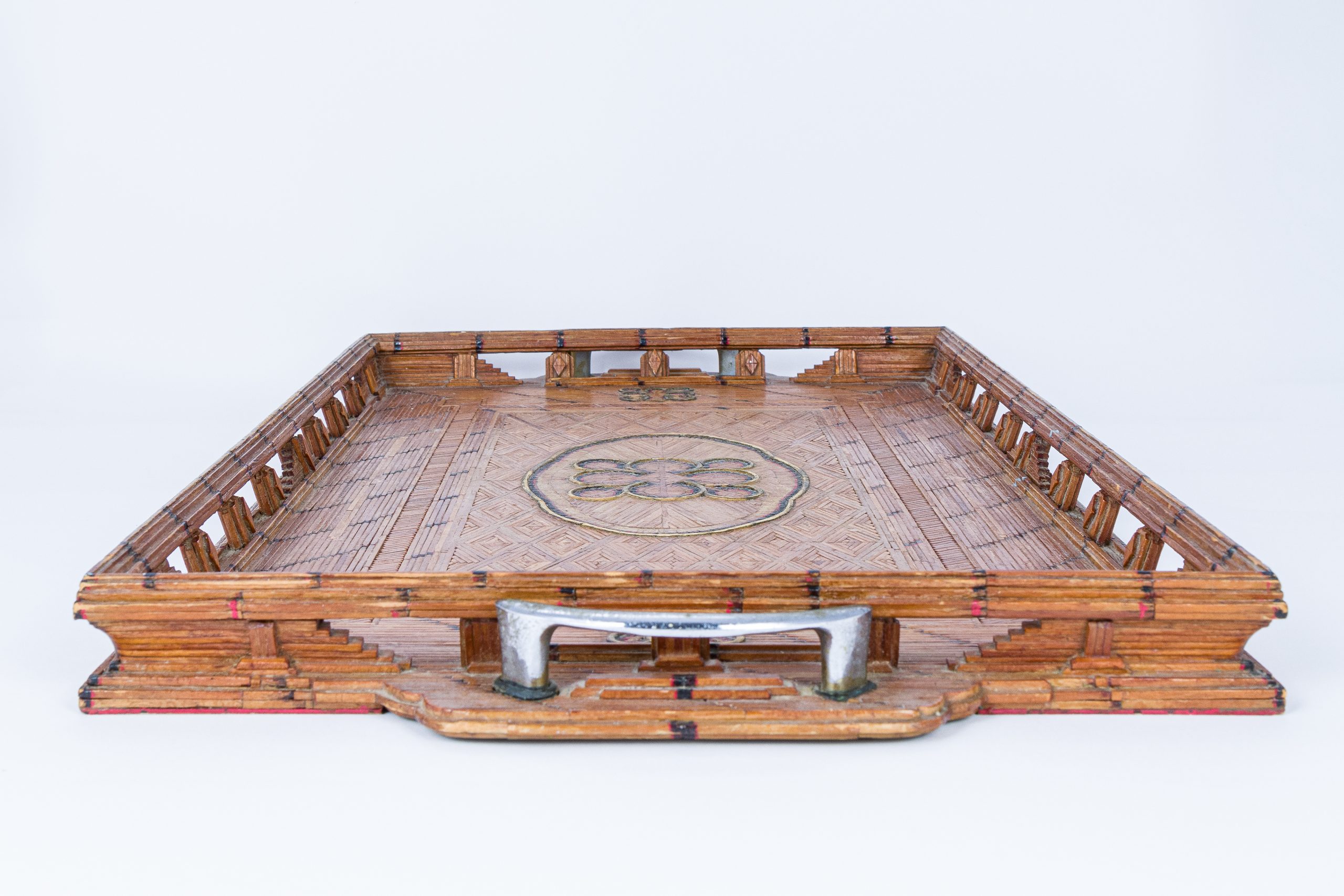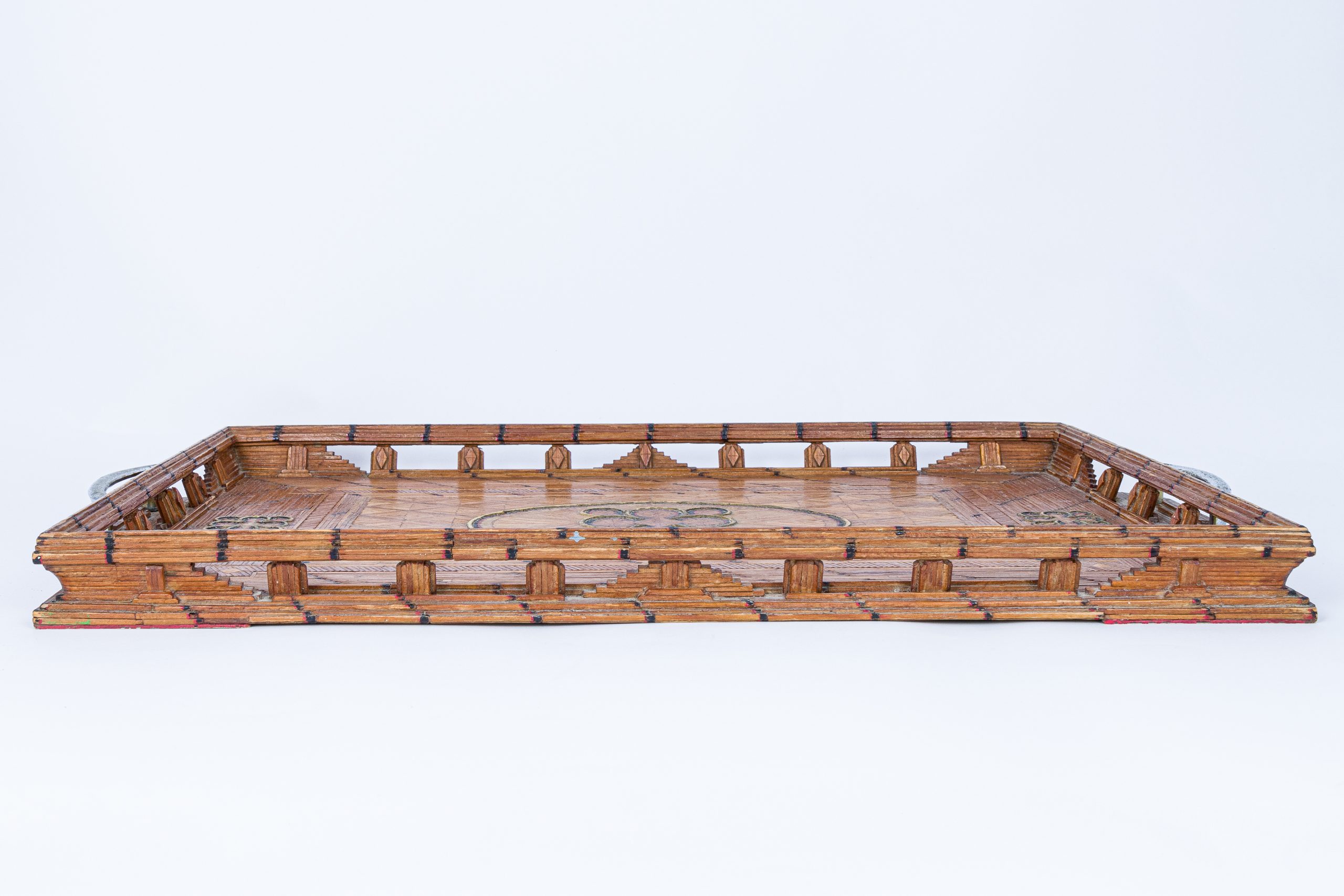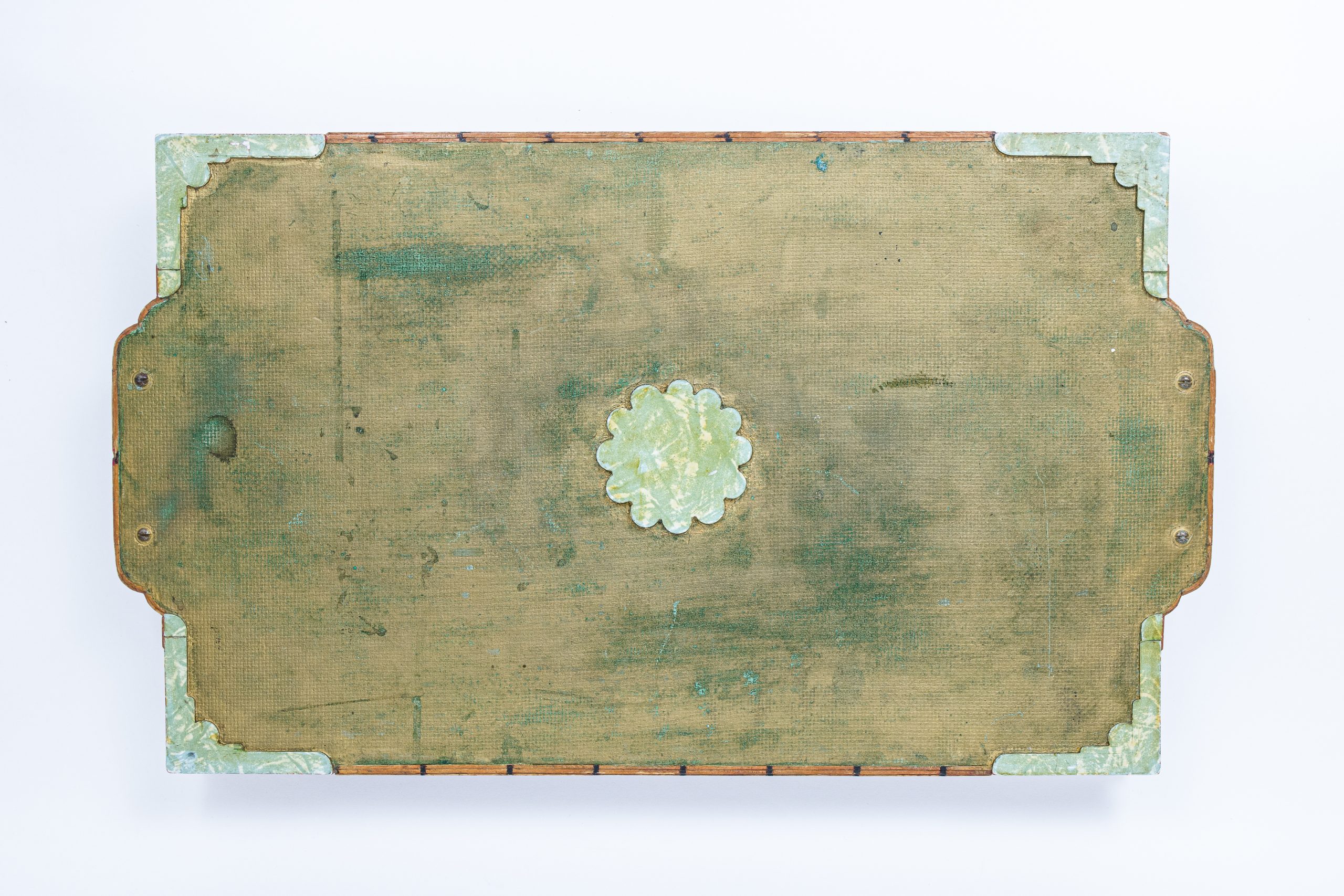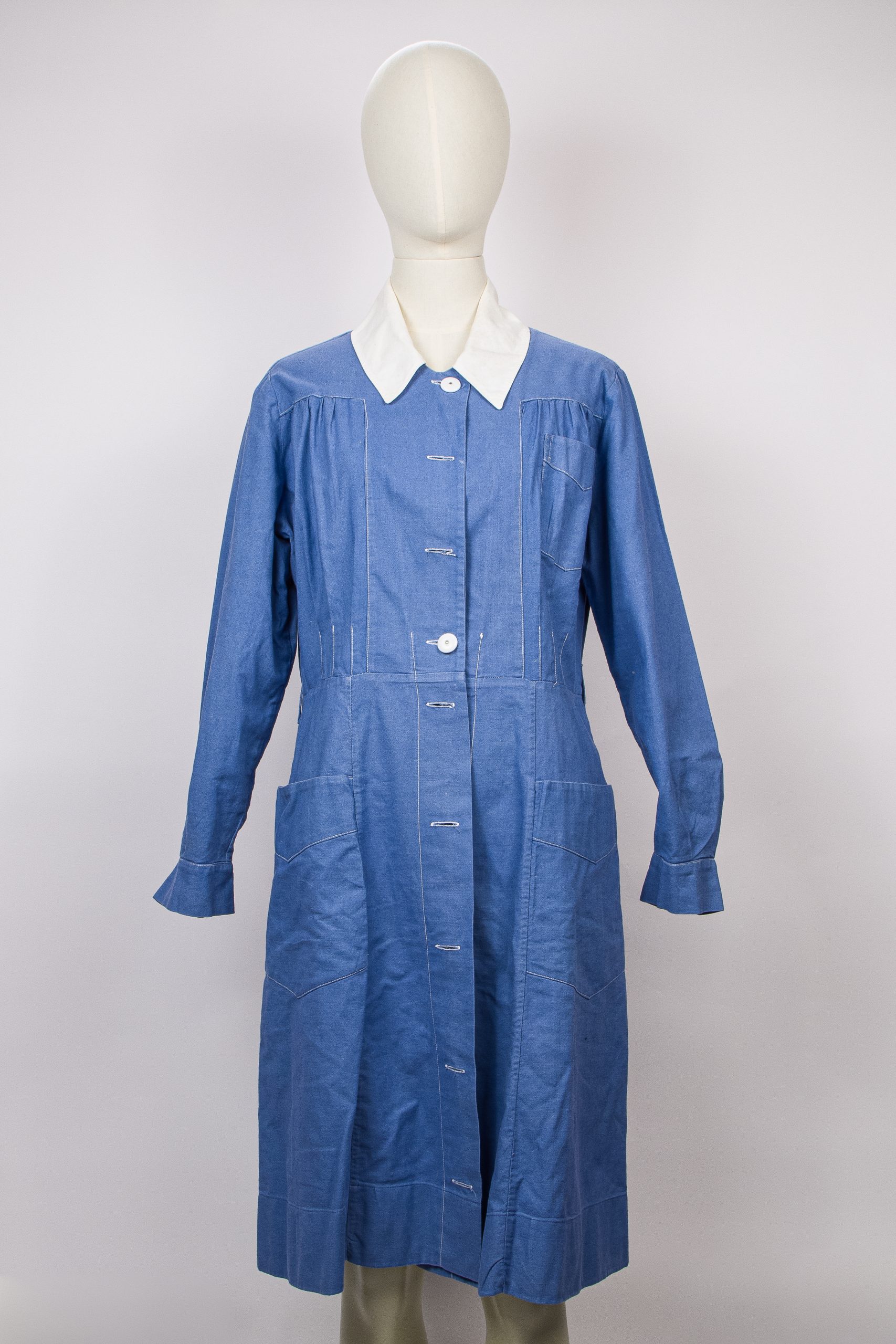Art in Confinement
Creativity and Morisset’s Maximum-Security Ward
In 1936, Morisset Psychiatric Hospital opened a new ward for the Criminally Insane, commonly referred to as the ‘Crim’ by staff. Patients of this maximum-security ward were men with mental illnesses which contributed to their offence or prevented their integration into the regular prison environment.
By the 1970s, the most common diagnosis of patients was schizophrenia and their charges were most often murder, attempted murder, or manslaughter, committed while experiencing fear or anger caused by their mental illness. They were kept to a walled off section of the grounds but received similar treatment to patients in the other wards with additional restrictions to movement and items considered dangerous.
This tray was made as a leisure activity by a patient within the Crim. Patients were allowed to smoke but they were not allowed access to lighters or matches. To craft this tray the patient would have collected spent matches from nurses over the course of a long period.
Dr Leslie Darcy, former Medical Superintendent of Morisset Hospital, wrote his thesis for a Masters in Health Administration using data collected from the Crim between 1971 and 1982. In speaking to how these patients should be treated, he concluded that:
‘It is necessary to recognise the value of caution but this must be tempered by an understanding that the patient has rights. He has in particular the right to be treated as well for his illness as are other psychiatrically ill persons. He has the right to be treated professionally by staff regardless of his offence.’
With this in mind, an item as innocuous as a tray can become a meaningful representation of how an institution aiming for rehabilitation should perform that role. A patient given the tools and treatment necessary to restructure their lives can ultimately create something of beauty.



